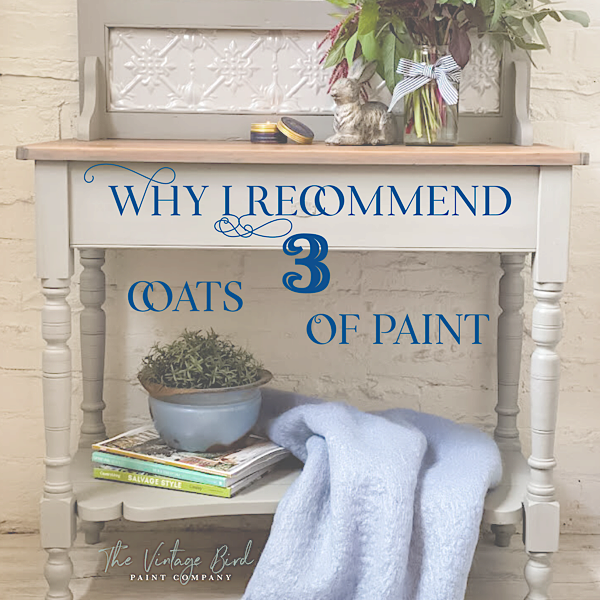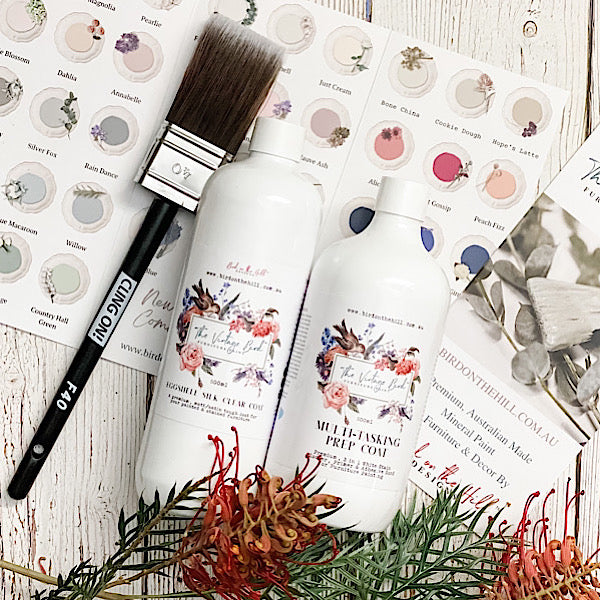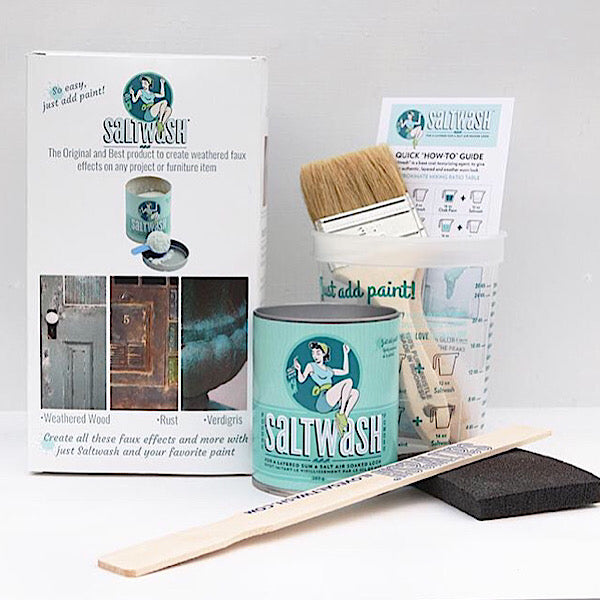
Hi there.
I'm sure you've seen the ad's, maybe even read the posts/watched the videos on social media about chalk paint and mineral paint that has amazing coverage and only one coat is needed.
Well, I'm not saying that I have tried every type of paint (though I have tried quite a few!), or that there may, or may not be some miracle paint out there that only requires one coat, but I do want to share my experience with you about why just painting one coat isn't such a great idea...
Here are my 4 top reasons...
1) If you think about the mechanics by which paint adheres to a surface, then you will understand that applying one thicker coat of paint to something isn't going to ensure longevity of the painted finish. Thick coats of paint have a greater chance of chipping, cracking and flaking off.
I treat my first coat of paint like a thin undercoat. It doesn't matter if it goes on looking patchy and streaky - in fact, this isn't a bad thing. If you can still see through the first coat of paint a little, don't panic. It's just there to act as an extra form of adhesion for the subsequent coats. Think of it like a thin sandwich between the substrate (surface you are painting onto) and the next coat. It's a good thing to make your first coat of paint your thinnest coat!

2) If you are using a good quality paint with deep pigmentation, you can build your level of colour much better with two to three coats rather than just one thicker one. This isn't such a big thing if you are painting with whites, but if you have a gorgeous, vibrant colour, you really want to give it every opportunity to take centre stage! This is particularly true for our Milk Paint, as the liquid (water) saturates the pigment and deepens the colour on the second and third coats as the paint has been mixed in liquid form for longer.
3) As mentioned above, a thick coat of paint can lead to increased risk of chipping and cracking. Another example - have you ever applied a face mask? The areas where you have applied the product most thickly take longer to dry, and quite often will crack as they dry. Alternatively, the thinner areas will dry quicker, and usually provide a smoother finish. It's the same for paint! Thin coats of our mineral Furniture Paint & Milk Pant dry very quickly!
4) This leads me to the next point - If you would like a smooth finish on your painted surface, thinner coats and a layering approach will help you achieve this more readily than one thick coat. Our mineral Furniture Paint and Milk Paintare both "self levelling" types of paint, meaning that they will settle to a flatter finish if applied as per guidelines. You can read more about getting a beautiful,smooth painted finish in my last blog post "Banish Brush Strokes".

So, there it is in a nutshell - why I usually always use three light coats on any furniture or decor I paint. I know it sounds like more work, but it really doesn't take much extra time at all. An added bonus - applying thinner coats means less chance of drips and runs, and also means you don't need to sand between coats to get rid of unwanted bumps and lumpy areas. You will also ensure you have used your time and money to create a durable, hardwearing surface that will last for years.
Now, that has to be worth an extra half hour of your time, don't you think? ;-)
Our beautiful, premium mineral Vintage Bird Furniture Paint is perfect if you're new to DIY & furniture painting. You can view our full range here:
SHOP VINTAGE BIRD PAINT
Happy Painting,
Corrina xx
Chief Paint Addict at Bird on the Hill


